

The names of villages where the tunes originate from are mentioned in the collection. This information enables to pinpoint the geographical location of each tune and more interestingly, it also makes it possible to describe various musical and lyrical features on a geographical basis. The technical implementation was carried out by Professor Petri Toiviainen. Below you can find examples of how different features of the collection can be visualized. To fully understand how the maps work, it is important to know the features and musical influences behind the songs.
- Tuomas Eerola
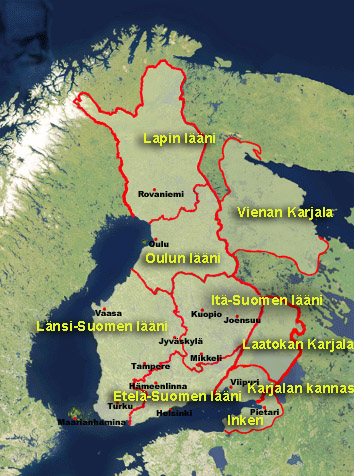
Map 1 shows the district divisions used in searching. They are mostly based on the Finnish Provinces, but the areas outside of the Finnish border have been named separately.
For these maps, the names of the villages and towns were transformed into longitude and latitude information. Because many location names have changed since the late 19th century, finding the correct coordinates required some investigation. Therefore the Karelian and Ingrian place names may still include minor mistakes. In some cases the names of the villages were unknown and the centre of the province was used. The maps are based on a satellite picture of Finland.
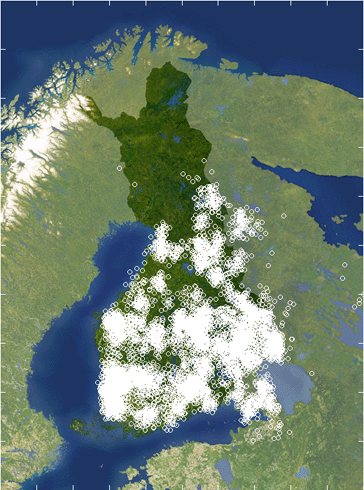
In Map 2, each white circle represents a tune, or more precisely, the place where it was collected. A quick glance shows that just a few tunes from Lapland have been included. This was rectified by Armas Launis, who collected plenty of Finnish-Sami yoiks in 1907.
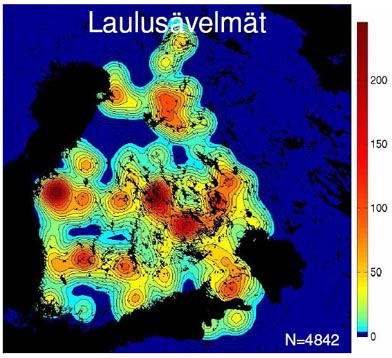
Because Map 2 does not clearly illustrate the places where particularly many songs were collected, Map 3 shows the geographical distribution of some 5000 folk songs. The incidence of the songs is indicated on a density map. The red colour indicates an area with a high incidence of songs whereas blue indicates that there are virtually no incidences.

Map 4 shows the number of the songs (N) in the other subcollections and how they are distributed geographically. The collections are concentrated in different areas (runo-songs in Ingria, kantele tunes in Ladoga Karelia and spiritual folk songs in a regions that are far apart).

Map 5 shows the relative proportion of minor key tunes. This is illustrated by ”density” on certain areas. The red colour (e.g. Eastern Finland) represents a high proportion of minor key tunes (nearly half of the tunes from that area). Areas marked in darkest blue indicate that most songs are in major key. On the West coast, for example, near Turku and Oulu, approximately 75% of the songs are in major key. The column on the right of the map explains the colours used in more detail. Only the Folk Songs collection (volumes 1-4) is represented in this map.
The minor key tunes were originally specified according to the information given by the collectors themselves, but the major and minor key concepts were somewhat confusing at the time, and therefore different modes and pentatonic scales may well characterize the tunes more appropriately (see e.g. Leisiö, 1999).
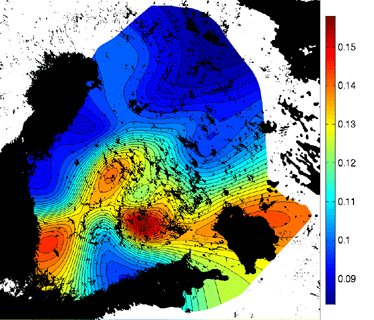
Songs in triple meter have commonly 3/4 (waltz) or 6/8 time signature. As shown on the map, these songs, as a whole, are in the minority; even in the high proportion areas (e.g. in Southern Savo) they only represent approx. 15% of the songs.
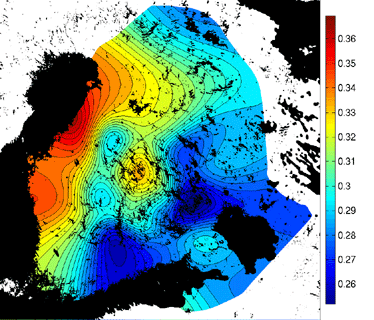
Songs do not always start with the tonic but those originating from Ostrobothnia seem to follow this pattern more often than others.
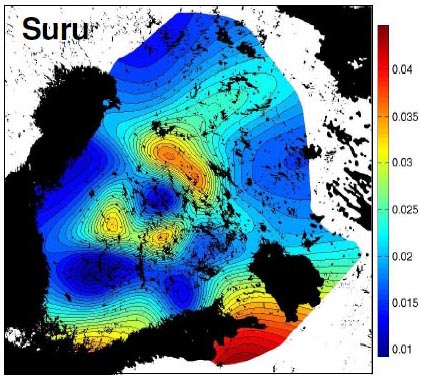
In addition to musical features, also song lyrics can be studied geographically. The first verses of the folk songs in the collection are stored in the database (as well as the original collection). In all, the song lyrics in the collection contain 74.596 words. The number of different words (including inflection) totals 13857.
Map 8 shows the distributions of the words expressing sorrow (e.g. murhe, suru, onneton). A typical example would be:
"Onneton olin minä ollessani, onneton tähän kylään tullessani"
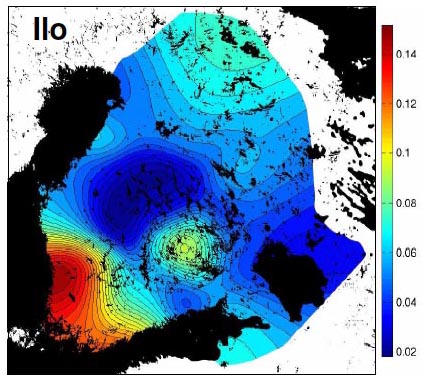
Map 9 illustrates the distributions of the words expressing joy (e.g. ilo, riemu). In general, these words are scarce, and they are, for the most part, found on the west coast.